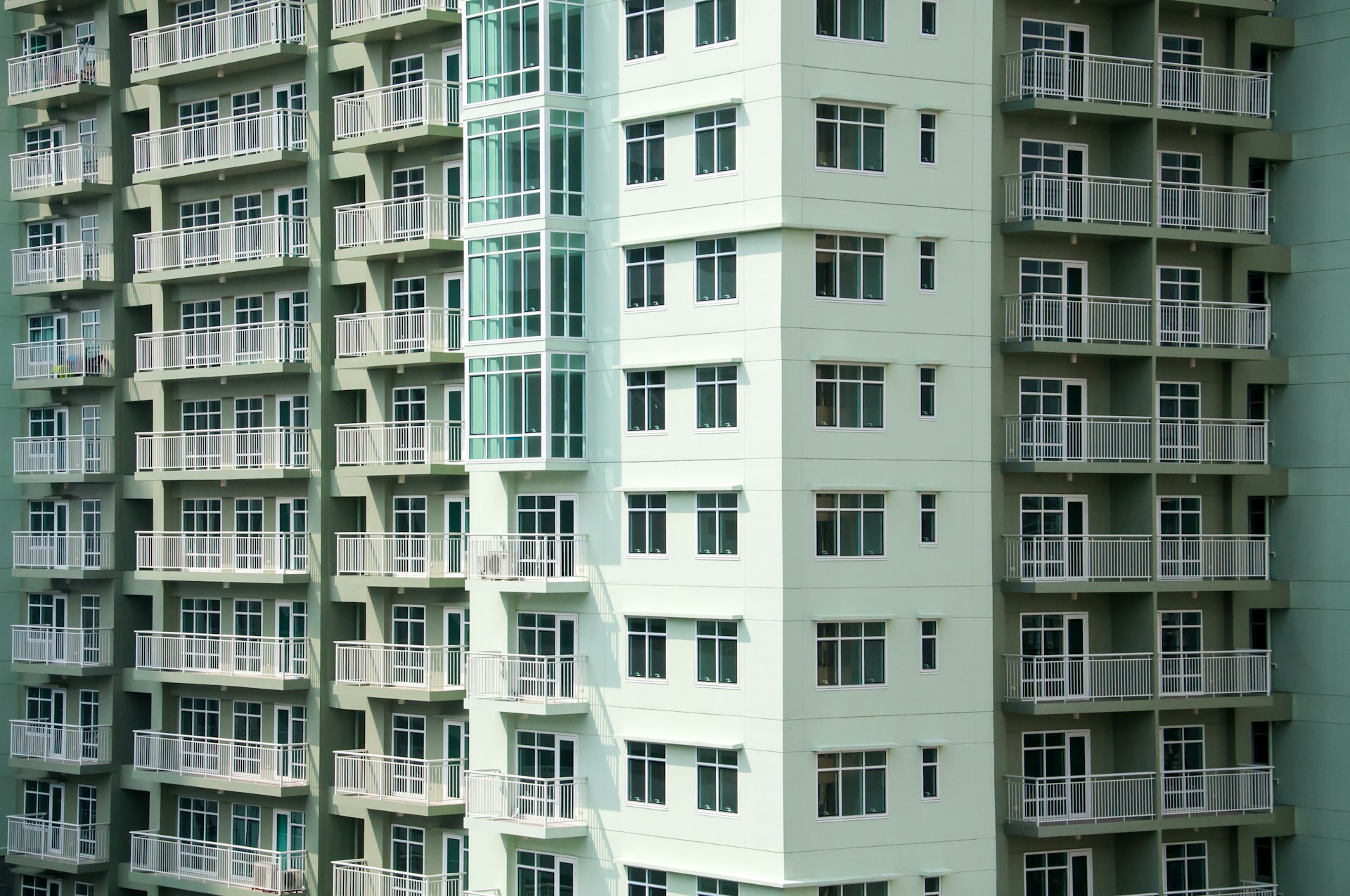High Density Housing: A Solution for Urban Living
With the growth of cities all over the world, high density housing has come out as one of the solutions to housing expansion and population.
High density housing describe housing structures and districts that house many inhabitants per unit area and includes apartments, flat, skyscraper, a compound or any building and its extension that accommodates many people.
These types of housing have multiple benefits, including optimum land usage, lower costs on the essential infrastructure, and environmentally friendly lives.
But, they also have their problems such as traffic jam, adverse impact on the environment or social problems.
In this blog, we will discuss what high density housing is, why it is beneficial or not, and how can the urban planner apply it to the sustainable city development.
1. The Growing Need for High Density Housing
Population of the world is becoming more and more urbanized with over 50% of the world’s population living in cities.
There is far much demand for housing in most cities across the world today than it is available in the market; such cities include New York, Tokyo, London, Beijing among others.
Consequently, urban sprawl, which is the outward expansion of cities with built up areas, elicits several undesirable effects such as encroachment of habitats for wildlife, traffic jams and high costs of laying down infrastructures respectively.
Consequently, the high density housing is being adopted by the cities bearing the growing populations in an attempt to keep the impact they make on environment as little as possible.
Due to the emphasis given to the vertical as compared to the horizontal growth high-density housing tends to maximize the use of the limited land and resources available.
The regions of Hong Kong and Singapore are one of the densely populated regions, and tall buildings and skyscraper apartments are common here wholly proving the high rise living facility in the regions where living space is limited.
High-density housing is also in sync with the right approach to managing urban development.
Cities focusing people in central districts can minimize the time they take in commuting, encourage public transport use, and access services, facilities.
This contributes positively to housing needs in urban areas without putting more pressure on green belts or development in surrounding fragile ecological systems and makes city management.

2. Advantages of High Density Housing
As suggested by the following advantages of high density accommodation, high density housing is favorable for use in the urban setting.
Some of these benefits include; efficient use of land, cost effectiveness, environmental friendly, and social interaction.
Efficient Land Use:
The main advantage of high-density housing is it helps optimise the scarce land resource in cities.
Skyscraper and apartments and condos make it possible for large numbers of people to live in a single area of land.
This prevents the conversion of the vast expanses of lands into suburban areas with little or no vegetation, Farms or wildlife reserves which are useful for food production or as natural habitat for wildlife respectively.
Historically, high density housing has been inevitable, especially in the Asian developed countries including Japan and Netherlands where land remains a scarce resource needed to be conserved for other purposes such as industrialization.
Economic Savings:
This is because more people ensure that the costs for laying down infrastructure and delivery of services are solved to a larger extend.
Construction of buildings growing along the perpendicular to the ground and the density of populating large plots with houses and apartments saves on extensive roads, water pipes, sewers, and electric power lines.
Since the services such as schools, hospitals as well as the retail outlets are established nearer the densely populated areas, the cost incurred for provision of public utility is considerably reduced.
Environmental Sustainability:
From an environmental design point of view, high density is favorable for sustainable living.
This measures minimizes the shift depending on the private car through the use of public transport, bicycles, and by walking.
The compact urban design for the cities makes it easier for the city to develop a more efficient transport system that can readily be used by more people.
In Copenhagen and Vancouver modern density housing means that tall building are designed interactive with public gardens and equipped with Eco friendly features as a part of initiatives to minimize carbon footprint and air pollution.
Social Connectivity:
High-density housing could enhance the level of interaction in the society and increase community participation.
Posted population density provides the probability of greater sharing of services, facilities and interaction spaces.
For instance, currently the European cities such as Barcelona and Paris ensure that parks, plaza and community centers all blend within the high density neighborhoods hence making them lively and vibrant cum-socialised entity of cities.
3. Challenges and Considerations for High Density Housing
High-density housing, though it has advantages, comes with some difficulties or disadvantages.
To overcome these problems there is a need to design, plan, and manage high density in modern cities in order to make it a positive experience for the inhabitants.
Congestion and Overcrowding:
With high-density housing comes problems like overcrowding and congestion being among the considerations to define housing density.
The problem with having many people indulge in a given space without adequate planning is that overcrowding, congested physical facilities, and overburdened facilities are observed.
Transportation, noise pollution, waste disposal, and control of air borne pollutants are even more challenging in high density areas.
As found by the authors, high density housing in some city may cause inadequate accommodation and deteriorating quality of life.
Environmental Stress:
While high density housing can be constructive for the sustainability of the living environment it can solely put extra pressure on the environment inhabitants if regulated unfavorably.
Multiple dwellings use much electricity, water and gas; many people produce much garbage.
While high-density developments offer efficient use of space and resources, they also present undesirable consequences, including degradation of the environment occasioned by poor waste disposal systems, non-renewable energy efficient designs and ineffective water conservation measures.
In order to reduce the negative effects on the environment, analysis of sustainable infrastructure, energy resources are necessary.
Social Inequality:
The other issue is the ability of high-density housing in enhancing social segregation.
Some cities see new high density buildings result in segregated and gated communities for the rich while leaving rest of the population cramped and living in substandard accommodations.
High rise development needs to incorporate affordable housing objectives for implementation on ground as a way of providing homing options for low income earners.
The scheme of having people with low, middle and high incomes within the same building or community is one solution as adopted by Singapore.
Conclusion
Compact living is a tactic of dealing with increasing population density in urban areas while allowing for safe, sustainable, and efficient infrastructure.
When urban planners ensure that these houses are grouped in strategic compact neighborhoods, this makes the overall planning more efficient, saves money on construction, as well as promotes environmentally friendly measures are adopted as a way of life by the people.
However, much higher density housing requires balancing the problems of overcrowding, environmental impacts and inequity so that these aspects can benefit from burgeoning city innovations.
High density housing, if planned well, can produce dwelling, energetic and socially sustainable cities in the present and for the future.
Also read: High Density Housing that works for all


There is apparently a lot to realize about this. I feel you made various nice points in features also.
Ok.
Excellent web site. A lot of useful information here. I am sending it to a few buddies ans additionally sharing in delicious. And certainly, thanks in your sweat!
Thank you! we are glad it’s helpful and share-worthy.
Can I just say what a relief to seek out someone who really is aware of what theyre talking about on the internet. You undoubtedly know find out how to deliver an issue to light and make it important. More folks need to learn this and perceive this aspect of the story. I cant imagine youre not more standard since you undoubtedly have the gift.
You’re very welcome. We are so glad you enjoyed the post.